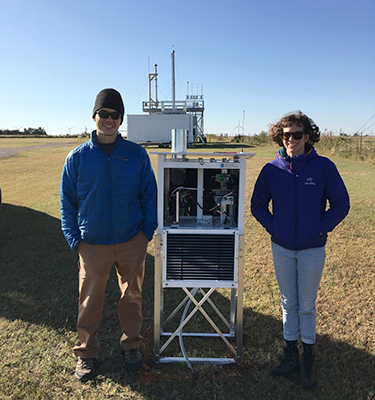

Where: Southern Great Plains (SGP) Central Facility and extended facilities
When: September 2019 - August 2021
Who: Investigators include NOAA CSL and the Cooperative Institute for Research in Environmental Sciences (CIRES), University of Leeds, Yale University, and Brookhaven National Laboratory.
How: By deploying a thirteen-site network of aerosol microphysical property measurements (number concentration and size distribution) across the U.S. Department of Energy ARM (Atmospheric Radiation Measurement) Southern Great Plains (SGP) domain using low-cost, simple, and robust instruments. These instruments include the Portable Optical Particle Spectrometer (POPS) [Gao et al., 2016], which measures aerosol size distribution in the range 0.14 - 2.5 µm, and the searchPM which measures PM1, PM2.5, and PM10 (aerosol number and mass concentration), temperature, relative humidity, and carbon monoxide.
The primary objective of this campaign is to determine the statistical representativeness of single-point surface measurements of microphysical parameters within a typical global model grid cell domain.
Aerosols play a significant role in the radiative forcing of climate change, either through their direct radiative effects or cloud-nucleating properties, however, estimates of this forcing have a large uncertainty that hampers our ability to project climate with useful accuracy. The current network of instruments measuring aerosol microphysical properties is extremely sparse and in many remote environments there are no long-term measurements. A spatially dense network of relatively low-cost aerosol microphysical property measurements can target one major source of persistent model error – the so-called 'representation error' [Schutgens et al., 2017]. The representation error arises because aerosol concentrations at a single measurement site can be persistently higher or lower than the average across a large model box (i.e., the measurement location is not representative of the area).